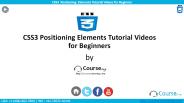U3AEA04 ELEMENTS OF AERONAUTICS - PowerPoint PPT Presentation
1 / 49
Title:
U3AEA04 ELEMENTS OF AERONAUTICS
Description:
U3AEA04 ELEMENTS OF AERONAUTICS Mr. SYED ALAY HASHIM Assistant Professor Department of Aeronautical Engineering VEL TECH Dr. RR & Dr. SR TECHNICAL UNIVERSITY – PowerPoint PPT presentation
Number of Views:118
Avg rating:3.0/5.0
Title: U3AEA04 ELEMENTS OF AERONAUTICS
1
U3AEA04ELEMENTS OF AERONAUTICS
- Mr. SYED ALAY HASHIM
- Assistant Professor
- Department of Aeronautical Engineering
- VEL TECH Dr. RR Dr. SR TECHNICAL UNIVERSITY
- Chennai
- INDIA
2
- I to V
- UNIT
- POWER POINT PRESENTATION
3
AIRCRAFT COMPONENTS
4
TYPES OF WING
- Monoplane
- Biplane
- Tandem wing
- Triplane
- Quadruplane
- Multiplane
- Canard wing
5
SWEEP WING
6
Leading edge extensions of various kinds
7
AIRCRAFT HISTORICAL RECORDS
8
(No Transcript)
9
(No Transcript)
10
(No Transcript)
11
(No Transcript)
12
IntroductionAEROSPACE ENGINES
- Comprehend the basic components of gas turbine
engines and their basic operations - Comprehend the thermodynamic processes occurring
in a gas turbine engines - Comprehend the support systems associated with
gas turbine engines
13
Gas Turbine Cycle
Gas Turbine Cycle
- Single stage Ideal gas turbine cycle
Two stage turbine cycle
14
Gas Turbine Cycle
Two stage Compressor and Turbine cycle
15
Jet Propulsion Cycle
In practical or actual cycle Entropy is not
constant
16
Jet EngineBasic Components
17
Compressor
- Supplies high pressure air for combustion process
- centrifugal flow and Axial flow
- Centrifugal Compressor
- Adv simple design, good for low compression
ratios (51), strong - Disadvantage Difficult to stage, less efficient,
high frontal area
18
Compressor
- Axial flow
- Good for high compression ratios (201)
- Most commonly used
19
(No Transcript)
20
Turbine
- Convert the kinetic energy into expansion work
- It is used to drive the compressor as well as
- propeller shaft
21
Comparison of Gas Turbine and Piston Engine
22
Classification of Engine
Engine
Air Breathing Engine
Non-Air Breathing Engine (Using atm air to
produced Power)
(Presents of Fuel and absents of Air instead of
Air Oxidizer. Hypersonic vehicles, Operating
Mach No 15 to 20)
Jet Engines Reciprocating
Engines (Propulsive thrust is produced by jet)
Rocket Engine (No moving parts)
Gas Turbine Engine Non-Gas Turbine Engine
(No moving parts)
(Available moving parts like Compressor and
Turbine)
Ramjet Scramjet Pulsejet
Turbojet Turboprop Turbofan Turbo-shaft
23
(No Transcript)
24
Turbojet
- Chemical energy is converted into mechanical
energy - 100 Thrust produced by Nozzle
- Operating Mach No 1 to 2
- Supersonic Aircraft (1 to 5)
25
(No Transcript)
26
Turbofan
- 20 to 40 of Thrust produced by Nozzle
- 60 to 80 of Thrust produced by Fan
- Operating Mach No 0.4 to 0.8
- High Subsonic Aircraft (0.3 to 0.8)
27
(No Transcript)
28
Turboprop
- 20 to 25 of Thrust produced by Nozzle
- 75 to 80 of Thrust produced by Propeller
- Operating Mach No 0.4 to 0.65
- Subsonic Aircraft (0.1 to 0.8)
29
Turbo Shaft
- High pressure turbine is used to rotate HP LP
Compressor - Low pressure turbine is used to rotate output
Shaft - No Thrust produced in the exit turbine gas
30
Turbo Shaft
- Kinetic energy is converted to Shaft power
- 100 Thrust produced by Shaft
- Operating Mach No 0.4 to 0.8
- High speed Subsonic helicopter (0.3 to 0.8)
31
(No Transcript)
32
Pulse Jet
- Made up of few moving parts
- Valved engines use a mechanical valve to control
the flow of expanding exhaust, forcing the hot
gas to go out the back of the engine through the
tailpipe - Starting the engine usually requires forced air
and an ignition method such as a spark plug for
the fuel-air mix. - It can operate statically
33
Rocket Engines
- A rocket is a machine that develops thrust by the
rapid expulsion of matter - A rocket is called a launch vehicle when it is
used to launch a satellite or other payload into
space - Rocket engines are reaction engines
- The highest exhaust velocities
- It is used in missile
34
Passenger airplanes
Sl. No. Description Less Moderate High
1 Specific fuel consumption Turbofan Turboprop Turbojet
2 Noise Level Turbofan Turboprop Turbojet
3 Operating Mach No Turboprop Turbofan Turbojet
4 Take off Thrust Turbojet Turbofan Turboprop
5 Altitude Turboprop Turbofan Turbojet
6 Load Carrying capacity Turbojet Turboprop Turbofan
7 Specific Impulse Turbojet Turboprop Turbofan
35
Thrust Equation
- Total Thrust Momentum Thrust Pressure Thrust
- mimj (mass flow rate)
- Inlet pressure Exit pressure
- Thrust force is the forward motion of engine
36
Factors Affecting Thrust
- PRESSURE
- TEMPERATURE
- DENSITY
- HUMIDITY
- ALTITUDE
- FORWARD VELOCITY
37
Methods of Thrust Augmentation
- After burning
- High thrust for short duration
- It is used only in take-off (or) for high
climbing rates - Additional fuel is burning in the tail pipe
between the turbine and exhaust nozzle - It is increased the jet velocity
- Oxidizer-Fuel Mixture
- Increase the mass flow rate
- Evaporative cooling which produces higher
pressure and higher mass flow rate - Increase the compressor pressure ratio due to
reduced compressor air flow - Water and menthol or alcohol Mixture
38
(No Transcript)
39
After burner
40
Oxidizer-Fuel Mixture
- Evaporative cooling which produces higher
pressure and higher mass flow rate
41
Advantages of Gas turbine Engines
- Weight reduction of 70
- Simplicity
- Reduced manning requirements
- Quicker response time
- Faster Acceleration/deceleration
- Modular replacement
- Less vibrations
- More economical
42
Disadvantages of Gas Turbine Engines
- Many parts under high stress
- High pitched noise
- Needs large quantities of air
- Large quantities of hot exhaust (target)
- Cannot be repaired in place
43
TYPES OF FUSELAGE STRUCTURE
44
(No Transcript)
45
(No Transcript)
46
(No Transcript)
47
FUSELAGE DESIGN
48
WING STRUCTURE
49
Thank you































